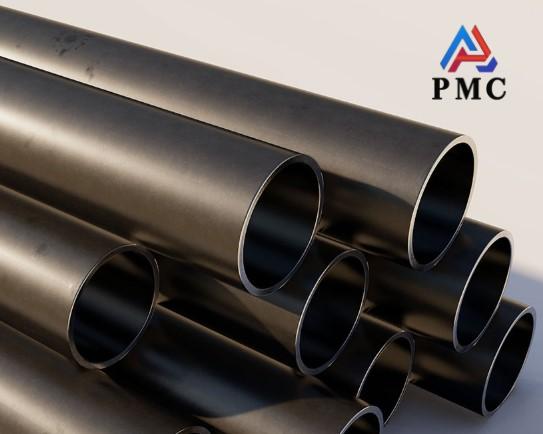
Seamless Pipes for Energy Equipment
Seamless pipes play an extremely important role in energy equipment, especially in systems that need to withstand harsh working conditions such as high temperature, high pressure, and corrosion. Since there are no welded seams in its manufacturing process, seamless steel pipe has higher structural integrity, uniform mechanical properties and excellent pressure bearing capacity, making it the preferred piping material in the energy sector. Permanent Steel Manufacturing Co., Ltd. has carefully summarized the characteristics, applications, standards, quality requirements and other related contents of seamless steel pipes for energy equipment.
Main application of seamless pipes in energy equipment
1. Thermal power generation (including coal-fired power, gas-fired power, biomass power generation, etc.)
Boiler pipes: including water-cooled wall tubes, superheater tubes, reheater tubes, economizer tubes, etc. These are the core components of the boiler and are in direct contact with high-temperature and high-pressure steam and combustion gases. They place extremely high demands on the material's high-temperature creep strength, oxidation resistance, and corrosion resistance.
Main steam pipe: transports high-temperature and high-pressure steam to the turbine.
Reheat steam pipes and water supply pipes: also need to withstand high pressure and certain temperature.
Headers and unions: Components used to collect or distribute fluids.
2. nuclear power generation
Internal piping of the nuclear island: reactor coolant system, steam generator U-tube, etc., has extremely stringent requirements on the corrosion resistance, pressure resistance, radiation resistance and reliability of the material, and usually uses high-performance stainless steel or nickel-based alloy seamless pipes.
Conventional island piping: turbine system, condenser, etc., similar to thermal power generation, but the standards may be more stringent.

3. Oil and gas industry (extraction, transportation, refining)
Oil and gas well casing and tubing: used for drilling and production of oil and gas wells, and need to withstand high pressure, corrosive fluids and formation stress.
Gathering pipeline: transports oil and gas from the wellhead to the processing site.
Refining and chemical equipment: heat exchanger tubes, reactor tubes, heating furnace tubes, process pipelines, etc., facing high temperature, high pressure and various corrosive chemical media.
Long-distance pipelines: The main lines for transporting oil and natural gas across regions and countries, which have high requirements on the toughness, strength and resistance to stress corrosion cracking of the pipelines.
4. New energy field
Concentrated Solar Power Generation (CSP): used for heat absorption tubes (collecting tubes) in collectors, thermal oil/molten salt transmission pipelines, steam generator pipelines, etc. These pipelines need to withstand high temperatures (up to several hundred degrees Celsius), high pressures and corrosion from special heat transfer media.
Geothermal power generation: Geothermal fluid transportation pipelines may involve high temperatures and underground corrosive environments.
Hydrogen energy: Pipelines in hydrogen transportation and storage equipment have extremely high requirements for the material's resistance to hydrogen embrittlement.
Wind power generation: Wind turbine tower support structures, transmission shafts and other structural components have requirements for strength, toughness and fatigue performance.
Characteristics and quality requirements of seamless pipes for energy equipment
Given that the operating environment of energy equipment is usually very harsh, the quality requirements for seamless pipes are extremely high:
Excellent high temperature resistance: maintains sufficient strength (anti-creep) at high temperatures, and resists oxidation and burning.
Good corrosion resistance: Resistant to corrosion by various acids, alkalis, salts, sulfides, chlorides and other corrosive media.
Excellent toughness: Resists brittle fracture even at low temperatures.
Strict dimensional accuracy and surface quality: especially for heat exchanger tubes and instrument tubes.
High reliability and long life: Energy equipment is usually designed to have a service life of several decades, and the reliability of pipelines is the basis for the safe operation of the system.
Strict testing standards: Before leaving the factory, it must undergo strict non-destructive testing (ultrasonic, X-ray, eddy current, etc.) and mechanical properties testing to ensure there are no internal defects.
Common seamless pipe material standards for energy equipment
ASTM A106/ASME SA106: Seamless Carbon Steel Pipe for High Temperature Service
ASTM A335/ASME SA335: Ferritic alloy steel seamless pipe for high temperature service (P series steel, such as P11, P22, P91, P92, etc.)
ASTM A213/ASME SA213: Ferritic and austenitic alloy steel seamless pipes for boilers, superheaters and heat exchangers (T series steels, such as T11, T22, T91, TP304H, TP316H, etc.)
ASTM A312/ASME SA312: Seamless and welded austenitic stainless steel pipe
API Spec 5L: Specification for Line Pipe
In short, energy equipment has multifaceted and strict requirements for seamless pipes. Correct material selection, strict implementation of standards and comprehensive quality control are the key to ensuring the long-term safe and stable operation of energy equipment.
Read more: Seamless Pipe for Geological Use


